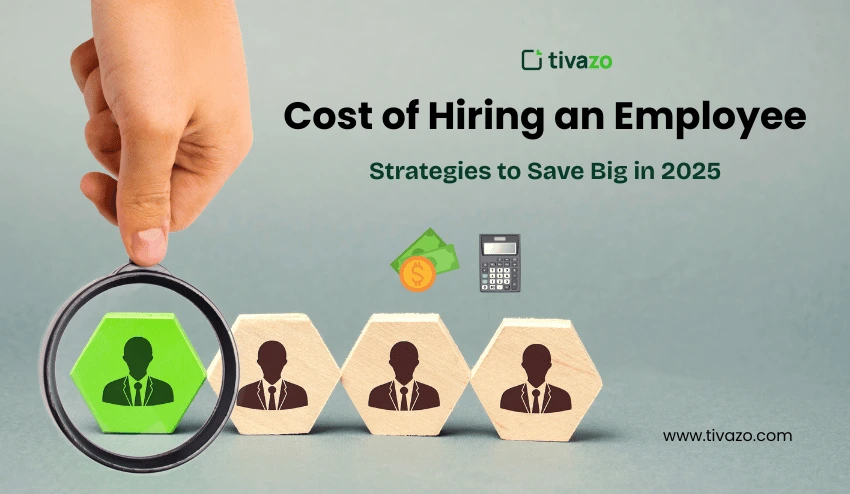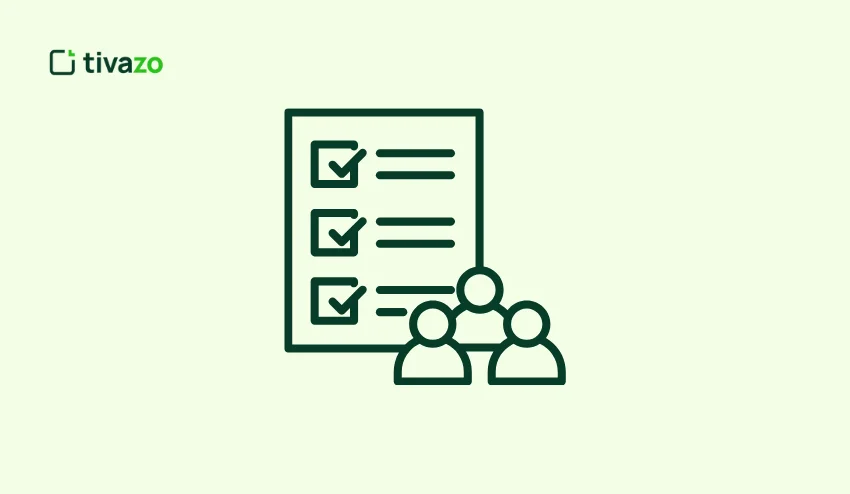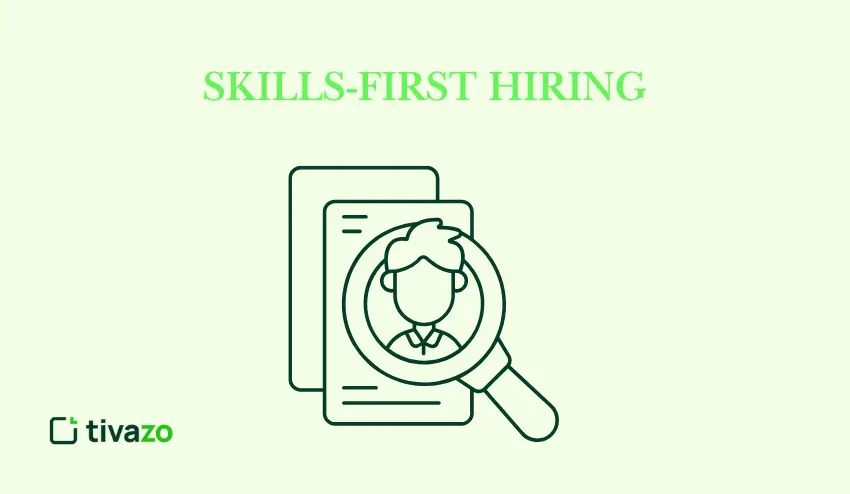Bringing on new employees can be a core aspect of growing a business, but it comes with a price tag. The full answer to the cost of hiring an employee includes expenses associated with the recruitment and screening process, training the person, lost productivity that occurs during onboarding, and many other considerations. Each new employee costs the company more than just the salary plus benefits package. Costs have continued to rise in line with the current labor market, especially in niche positions and competitive sectors.
This guide will uncover the real cost of hiring an employee and share seven strategies to cut these costs by a meaningful amount, so your business can save big in 2025 and beyond.
Key Highlights:
- Understand the Full Cost of Hiring
- 7 Proven Ways to Cut Costs
- Industry-Specific Insights
- Predict Future Trends
- Smart Data Use
What Does “Cost of Hiring an Employee” Really Mean?
The cost of hiring an employee will include more than just a salary and a benefits package. These costs will involve a host of direct and indirect costs, any combination of which can escalate quickly if there is no cost management in place.
Understanding these costs helps you make smarter decisions when planning your hiring strategy and budget.
How do you calculate the cost per hire?
Cost Per Hire (CPH) is the metric that tells you the real expense of making a hire. CPH is one of the most important tools that show you how efficient and effective your hiring process is, and it helps to determine if you are using your hiring budget wisely.
CPH Formula:
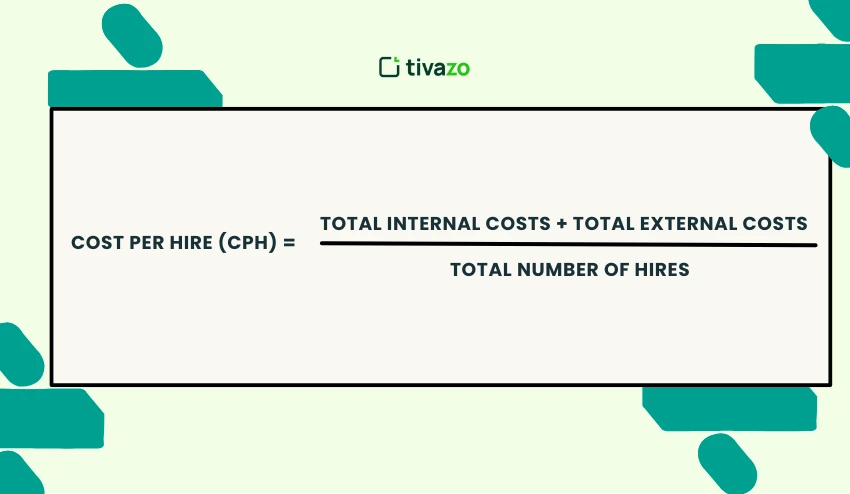
- Internal Costs: Total time expended by HR and managers, and administrative input/support.
- External Costs: Recruitment agency fees, job board list, background check, and relocation costs.
For example, if your total costs to hire as an organization are $75,000 in a quarter and you made 15 hires, your Cost Per Hire is $5,000. Tracking this over time will assist you in optimizing and making improvements in your cost of hiring an employee activities.
How much money does it cost to hire someone?
When it comes to the costs associated with hiring someone, they can differ dramatically, based on several factors:
- Direct Costs:
- Job Ads/Posting: $100 to $500 (it depends on where you post and for how long).
- Recruitment Agency Fees: $4,000 to $15,000+, usually based on a percentage of the new hire’s first-year salary.
- HR Software: $300 to $1,000 (per hire, depending on the platform).
- Pre-employment Screening: $50 to $200 (background checks, drug tests, etc.).
- Relocation: $2,000 to $10,000+ for some positions or geographic locations.
- Indirect Costs:
- Internal Labor (HR time): $1,000 to $4,000 for recruiting, interviewing, and administrative work.
- Onboarding: $1,000 to $5,000 for training tools, equipment, and resources.
- Lost Productivity: $1,000 to $5,000+ during the ramp-up period while waiting for new hires to get familiar and ramp up to a productive period.
So, a total could be anywhere from a few thousand dollars for the simplest hires, to more than $20,000 if you’re hiring something more specialized, or senior roles.
7 Proven Strategies to Reduce the Cost of Hiring an Employee in 2025
With the foundation for understanding what the cost of hiring an employee is laid out, let’s explore 7 actionable methods for reducing those costs and maximizing your value of hiring an employee.
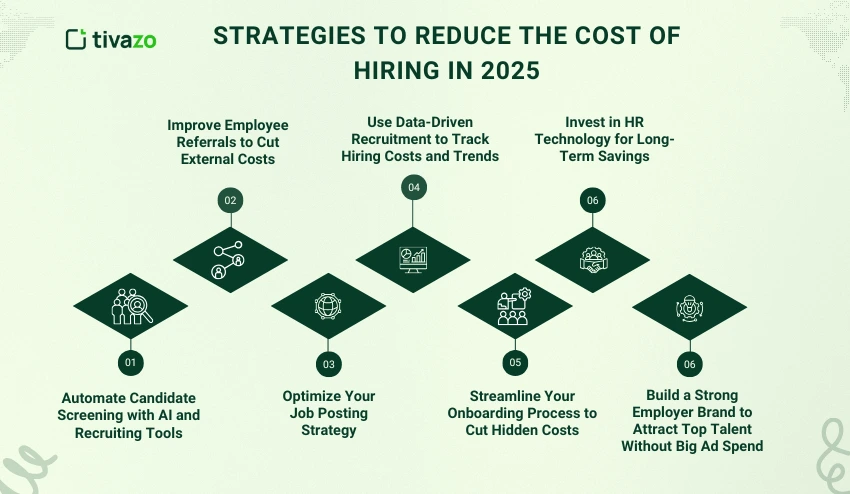
1. Automate Candidate Screening with AI and Recruiting Tools
Utilize AI tools and recruitment software to make the candidate screening process more efficient. These technologies can eliminate unqualified candidates from consideration earlier in the process, only letting your hiring team see the most qualified applicants.
- Resume scanners:
- AI tools can scan resumes and match them to job requirements in a fraction of the time without requiring a person to look at each resume.
- Chatbots for initial interviews:
- AI chatbots can conduct initial candidate interviews, answering basic questions and scoring answers that can be passed on to a human recruiter.
- Faster hiring:
- By automating these early stages of the hiring process, you reduce time-to-hire and allow HR staff to focus on more strategic tasks.
2. Improve Employee Referrals to Cut External Costs
Employee referrals are one of the most inexpensive hiring strategies available. Encouraging your employees to refer talent from their network saves you the cost of recruitment agency fees, job ad costs, and hiring variable fees, depending on your hiring rate.
- Referral bonuses:
- Offering monetary or other incentives can create motivation for employees to refer strong candidates.
- Better cultural fit:
- Referred candidates have a better chance of fitting in quickly, and thus they have a better chance of working out and working for the company longer.
- Lower turnover:
- Employees sourced through referrals tend to have less anxiety and give them confidence in their decision, and can help provide a source of candidates to fill positions once one is no longer needed.
3. Optimize Your Job Posting Strategy
You can advertise your jobs more strategically when you are not posting to ALL job boards. By reducing the number of posts to specific job advertisements, you can limit how much you are spending on marketing job advertisements, but by targeting the ones that provide maximum value.
- LinkedIn and Indeed:
- You can expect a lot of applicants for those job advertisements throughout the search, and a good chance they will meet enough criteria to work for a wide variety of roles.
- Company-specific Job boards:
- If you are hiring for a very specialized job, use job boards that are company-specific for jobs to attract a more relevant readership.
- Avoid wasting money:
- By choosing the right boards, you should avoid wasting money on boards that don’t have an output of candidates that are of high quality and qualified.
4. Use Data-Driven Recruitment to Track the Cost of Hiring an Employee and Trends
Data-driven recruitment allows you to follow and utilize important recruitment metrics such as cost-per-hire, time-to-hire, and candidate quality. These metrics can expose inefficiencies and inform more intelligent decisions to incentivize improvements to the recruitment funnel.
- HR software:
- There are lots of software, including Applicant Tracking Systems (ATS) and HR databases and analytic platforms, that will track your reportable data metrics.
- Trends:
- You will observe trends and understand which recruitment methods are the most cost-effective, and then deploy budget allocations to the various channels accordingly.
- Informed decision:
- Finally, the ability to use reporting; data-driven insights to inform decisions to optimize your hiring process is essential in the long term if you want to create cost savings.
5. Streamline Your Onboarding Process to Cut Hidden Costs
There are often hidden costs involved with the onboarding process, from transferring existing employees’ knowledge about the process to the time aspect of onboarding, it all adds up and is difficult to track. Streamlining this process will save all resources and will mean you can make new hires more productive much faster.
- Virtual training:
- You can structure the training program around loaded software so that it is just as productive without the need to be in person through a targeted onboarding virtual meeting platform.
- Automated documentation:
- Automate employee document submission and completion to derive proper time savings for both the HR team and the new employee.
- Self-Service Portals:
- New hires can complete certain tasks by themselves, reducing the administrative burden by allowing the new hire to fill out forms or set up accounts, etc.
6. Invest in HR Technology for Long-Term Savings
Investing in HR software and tools needs to include investing in Applicant Tracking Systems (ATS) and HR Information Systems (HRIS). These tools will give you savings in the long term since the software will automate key functions related to recruiting and internal employee management, as well as payroll, etc.
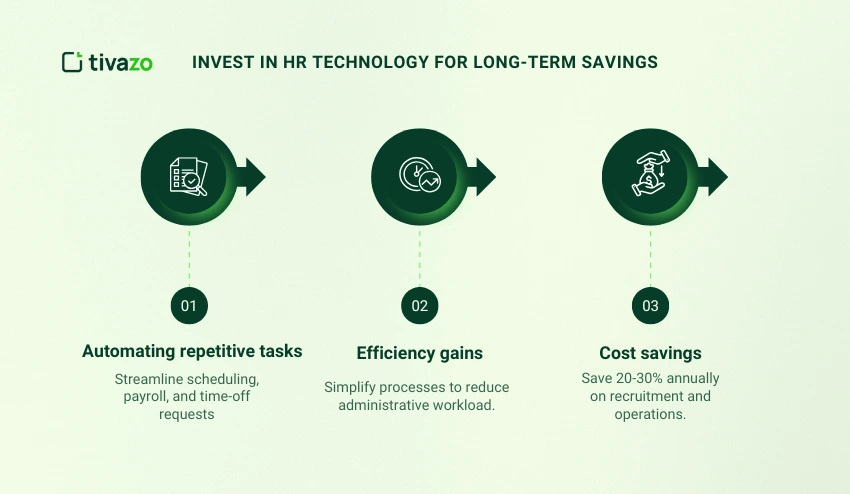
- Automating repetitive tasks:
- Many HR functions can be automated, such as scheduling interviews, processing payroll, and monitoring time-off requests. Automating these processes will save time and outperform human processing while reducing errors.
- Efficiency gains:
- Utilizing these systems will streamline work processes and methods, which will also help the HR department manage its employees more effectively by reducing the administrative burden on employees.
- Cost savings:
- Over time, these tools can provide cost savings of 20% – 30% annually and help firms reduce great pounds in recruitment and operational costs.
7. Build a Strong Employer Brand to Attract Top Talent Without Big Ad Spend
A solid employer brand is a great asset that can help you attract talent without having to lean on expensive advertising costs or outside organizations to recruit.
- Demonstrate company culture:
- Share information about your values, mission, and working environment on social media, your website, and in job advertisements.
- Staff stories:
- Share stories from current staff on their experience working for your company.
- Attract talent organically:
- Mission, values, and the company culture (a strong employer brand) can attract quality candidates to you, diminishing the need to spend on advertising.
Average Cost of Hiring an Employee for 2025: A Breakdown by Industry
Understanding how much businesses spend on hiring across industries can help you gauge where your company stands. Here’s a breakdown of average hiring costs by industry:
| Industry | Average Hiring Cost | Factors Affecting Costs |
| Tech | $7,000 – $20,000 | High demand for niche skills, agency fees, and relocation packages |
| Retail | $1,500 – $5,000 | Seasonal demand and recruitment events |
| Healthcare | $3,000 – $15,000 | Background checks, certifications, and relocation |
| Finance | $6,000 – $12,000 | High competition for roles and agency usage |
| Manufacturing | $2,000 – $5,000 | Local labor markets and unionized environments |
Each industry has unique challenges, so adjusting your recruitment strategy to fit your sector will help optimize hiring costs.
Cutting-Edge Technologies Impacting the Cost of Hiring an Employee in 2025
In 2025, new technology will continue to disrupt and enhance hiring processes. Here is a very small sampling of cutting-edge technology that can have an impact on hiring costs and processes:

AI for Screening:
Quickly filter resumes and applications, helping you to find the best candidates without wasting your time.
Automated Interviewing:
Use chatbots and virtual interviews to speed up the interview process.
Remote Hiring:
With remote-first policies, businesses save on relocation and office infrastructure.
Common Mistakes to Avoid in Hiring
While it is important to consider the approaches to save costs, there are equally important mistakes that could lead to overspending. Here are some to look out for:
- Not measuring key metrics like Cost per Hire (CPH) and Time to Hire.
- Not taking into account hidden expenses such as training and onboarding.
- Using recruitment agencies is an inappropriately high proportion of the time when hiring.
If you can avoid these typical mistakes, you can ensure you maintain a lean and efficient hiring process.
Building a Scalable Hiring Process for Future Growth
As your company grows, you must establish a scalable hiring process that reflects your growing workforce. One of the best solutions is to integrate powerful AI tools that help you automate tasks such as candidate screening. This will help streamline procedures and work through larger and larger applicant pools without increasing labour costs. Focusing on talent development internally will also limit your need to hire externally. Doing so not only saves you money (and time), but it can also help your employees feel more loyal to your company.
Another solution is to establish a talent pipeline, so you won’t be caught off guard when vacancies arise. Having a pipeline will allow you to proactively seek candidates systematically. Not only will you enjoy lower costs on each hire, but you will also enjoy reduced stress when figuring out “who to hire next”. By developing whichever approach is appropriate for your hiring process, you will ensure the process remains cost-effective as your company expands.
What the Cost of Hiring an Employee Will Look Like in 2026: Trends and Predictions
As we begin to move toward 2026, the cost of hiring an employee will continue to change. The world of hiring will be shaped by technology, flexible work arrangements, and changing expectations of employees. Here are some things we can expect in the hiring landscape in the years to come:
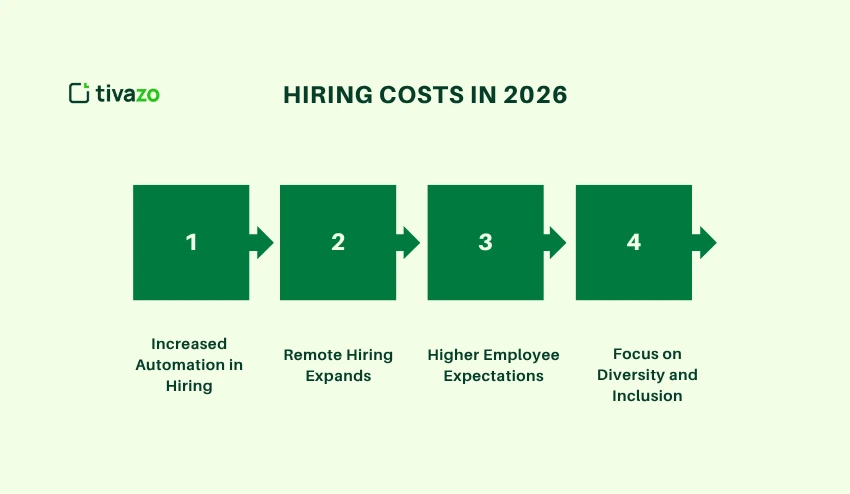
Increased Automation in Hiring
AI and recruitment automation tools will be used in even greater capacity to remove the need for manual processes and reduce costs associated with recruitment.
Remote Hiring Expands
The remote-first model will end with a reduction of overhead expenses, such as maintaining office space for your employees and costs incurred with relocating applicants. Organizations will have the opportunity to hire in a global talent pool, which may drive some geographic industries’ costs down.
Higher Employee Expectations
With the rising demand for skilled workers, businesses will be on the hook to provide more premium compensation packages and commit dollars to employee well-being initiatives to attract talented employees, and this overhead expense will cause hiring costs to rise.
Focus on Diversity and Inclusion
Diversity hiring will prove to continue to be a factor in recruiting. Companies that will educate themselves on and use inclusive hiring practices may see a slightly higher upfront cost, but it is likely they will end up with satisfied employees providing optimum productivity.
By preparing for these 2026 trends, you will help keep your hiring processes current and competitive in a constantly changing environment.
Conclusion
Hiring the best employees doesn’t have to eradicate your resources, and with the right tools, the right tactics, and the knowledge of the actual true costs of hiring, you can simplify the process and expense while still acquiring talent.
Using these 7 strategies can allow you to make the best data-driven decisions, become more efficient, and ultimately allows you to save money.
